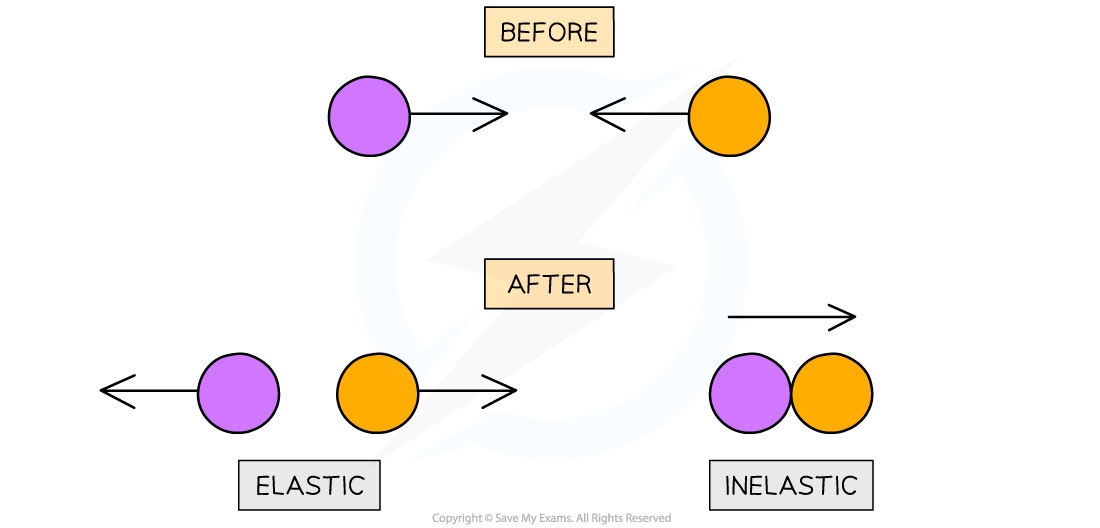Collisions
- Examples of momentum in an event are collisions
- Objects will either:
- Collide and move in opposite directions - this is an elastic colision
- Collide and move in the same direction together - this is an inelastic collision
- When the objects move in opposite directions:
- Each object will have a different velocity depending on its mass and initial momentum of the system
- When the objects move in the same direction together:
- They will have a combined mass and velocity
- Momentum is always conserved in a collision

Types of collisions
If an exam question asks you to analyse a collision, follow these tips for full marks:
- Always consider the motion before and after the collision and state:
- The velocities of each object
- The direction each object moves
- State whether the collision was elastic or inelastic and explain your reasoning
- In a perfectly elastic collision, the kinetic energy is the same before and after
- In a perfectly inelastic collision, the two objects stick together after colliding
- Describe any energy transfers that occur if kinetic energy is not conserved
- For example, it may be converted into heat, sound, elastic potential energy etc

